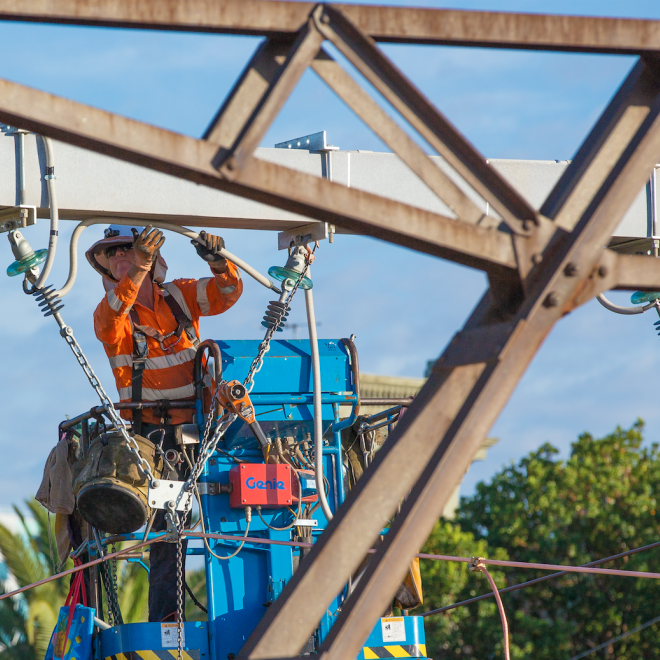
The role
Tasks include:
• conducting scheduled maintenance
• carrying out inspections of rail traction infrastructure
• working on high voltage and low voltage electrical apparatus, on alternative current and direct current electrical circuits flowing through the overhead network.

Skills required to be a Traction Electrician
- Advanced critical skills in planning
- Risk management
- Asset management
- Frontline leadership
- Problem solving
Possible entry pathways for Traction Electricians
People who work as a rail traction electrician often come from a career in:
- construction, defence, resources sectors
- electrical supply
- electrician
- engineering.
Minimum requirements
Minimum mandatory qualification for a traction electrician: UET30721 - Certificate III in ESI - Rail Traction.
Optional additional qualifications: UET40422 - Certificate IV in ESI - Network Systems.
Potential training pathway

What a Traction Electrician's career progression can look like
Traction Electricians may look to advance their career through jobs such as a group or team leader, rail systems coordinator or engineer technical specialist.

What do I do next?
Our analysis on Traction Electrician training in Australia can be found here
To find out more about becoming a Traction Electrician:
- check out the Electrical Lines Worker page on the Work in Rail website
- talk to your careers adviser
- get in touch with the Electrical Trades Union
- contact your local TAFE
- if you already work in rail, talk to your employer.
Meet the people

Daniel Calebrano spent a year in the army and then trained in a business course before changing direction. He joined Queensland Rail (QR) as a labourer and then Traction Electrician and now manages a team of linesmen. You can read his story here.
If you have great job in rail, get in touch.
